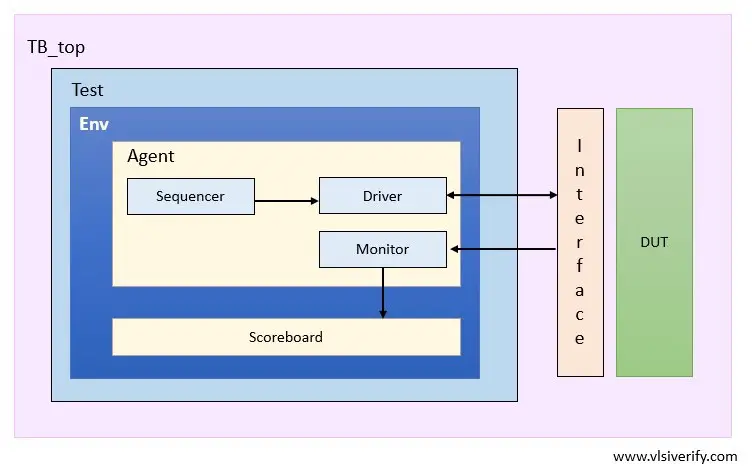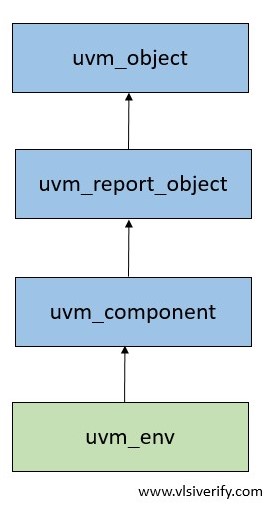UVM Environment
An environment provides a well-mannered hierarchy and container for agents, scoreboards, and other verification components including other environment classes that are helpful in reusing block-level environment components at the SoC level. The user-defined env class has to be extended from the uvm_env class.

uvm_env class hierarchy

Class Declaration
virtual class uvm_env extends uvm_component;User-defined env class declaration
class <env_name> extends uvm_env;How to create a UVM env?
Steps:
- Create a user-defined env class extended from uvm_env and register it in the factory.
- In the build_phase, instantiate the agent, other verification components, and use the configuration database to set/get configuration variables.
- In the connect_phase, connect the monitor, scoreboard, and other functional coverage components using the TLM interface.
UVM Environment example
class env extends uvm_env;
`uvm_component_utils(env)
agent agt;
scoreboard sb;
func_cov fcov;
function new(string name = "env", uvm_component parent = null);
super.new(name, parent);
endfunction
function void build_phase(uvm_phase phase);
super.build_phase(phase);
agt = agent::type_id::create("agt", this);
sb = scoreboard::type_id::create("sb", this);
fcov = func_cov::type_id::create("fcov", this);
endfunction
function void connect_phase(uvm_phase phase);
// connect agent and scoreboard using TLM interface
// Ex. agt.mon.item_collect_port.connect(sb.item_collect_export);
endfunction
endclassHow to instantiate multiple env in top_env?
class top_env extends uvm_env;
env env_o[3];
`uvm_component_utils(top_env)
function new(string name = "top_env", uvm_component parent = null);
super.new(name, parent);
endfunction
function void build_phase(uvm_phase phase);
super.build_phase(phase);
foreach(env_o[i])
env_o[i] = env::type_id::create("$sformatf("env_o_%0d", i)", this);
endfunction
...
endclassUVM Tutorials